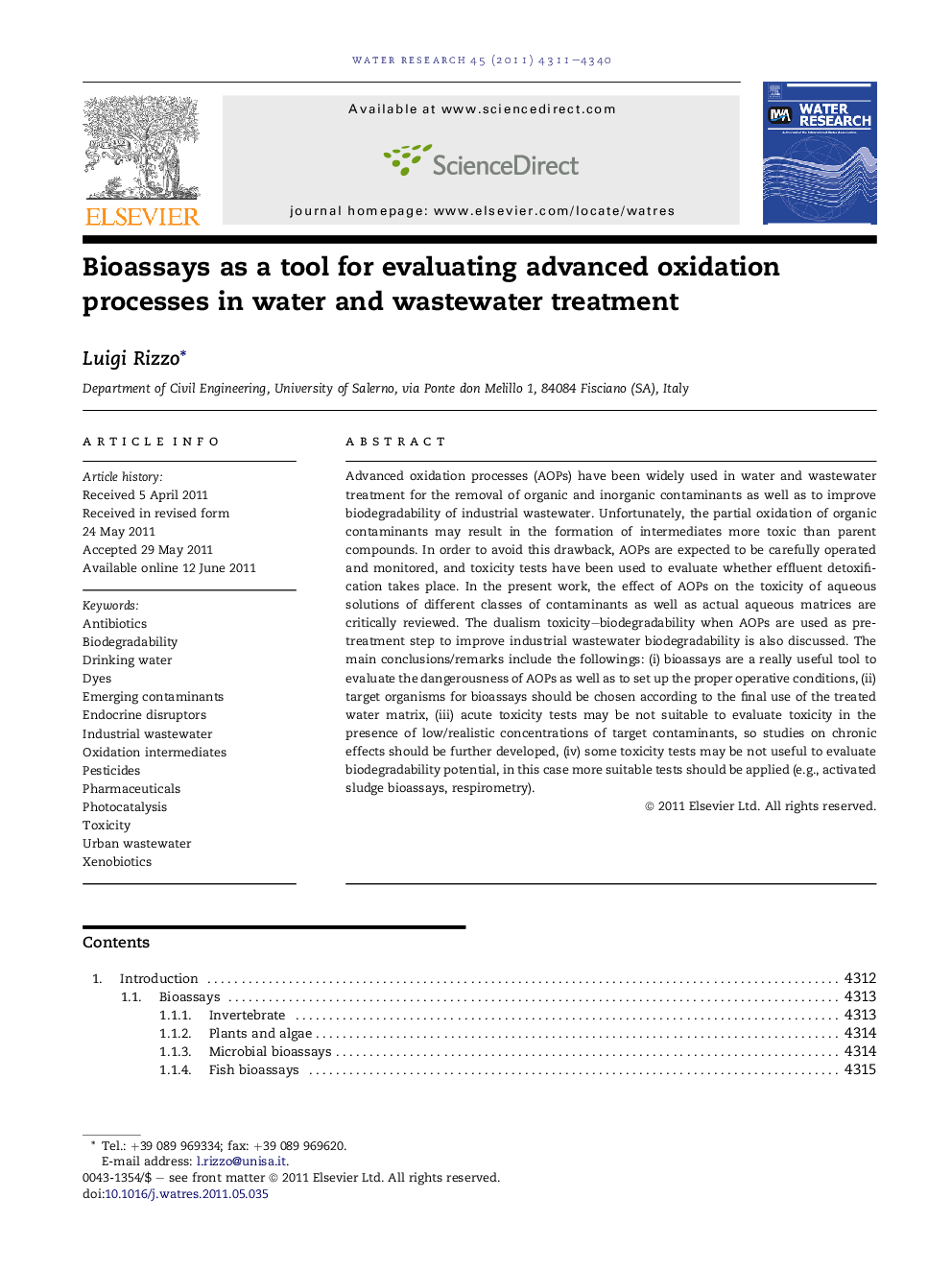| Article ID | Journal | Published Year | Pages | File Type |
|---|---|---|---|---|
| 4483292 | Water Research | 2011 | 30 Pages |
Advanced oxidation processes (AOPs) have been widely used in water and wastewater treatment for the removal of organic and inorganic contaminants as well as to improve biodegradability of industrial wastewater. Unfortunately, the partial oxidation of organic contaminants may result in the formation of intermediates more toxic than parent compounds. In order to avoid this drawback, AOPs are expected to be carefully operated and monitored, and toxicity tests have been used to evaluate whether effluent detoxification takes place. In the present work, the effect of AOPs on the toxicity of aqueous solutions of different classes of contaminants as well as actual aqueous matrices are critically reviewed. The dualism toxicity–biodegradability when AOPs are used as pre-treatment step to improve industrial wastewater biodegradability is also discussed. The main conclusions/remarks include the followings: (i) bioassays are a really useful tool to evaluate the dangerousness of AOPs as well as to set up the proper operative conditions, (ii) target organisms for bioassays should be chosen according to the final use of the treated water matrix, (iii) acute toxicity tests may be not suitable to evaluate toxicity in the presence of low/realistic concentrations of target contaminants, so studies on chronic effects should be further developed, (iv) some toxicity tests may be not useful to evaluate biodegradability potential, in this case more suitable tests should be applied (e.g., activated sludge bioassays, respirometry).
► The effect of AOPs on the toxicity of different water and wastewater is discussed. ► The effect of AOPs on the toxicity of emerging contaminants is discussed. ► Toxicity–biodegradability dualism when AOPs are used to improve biodegradability. ► The most used toxicity tests as well as methods are summarized. ► The toxicity tests are suggested according to water matrix and final use.
